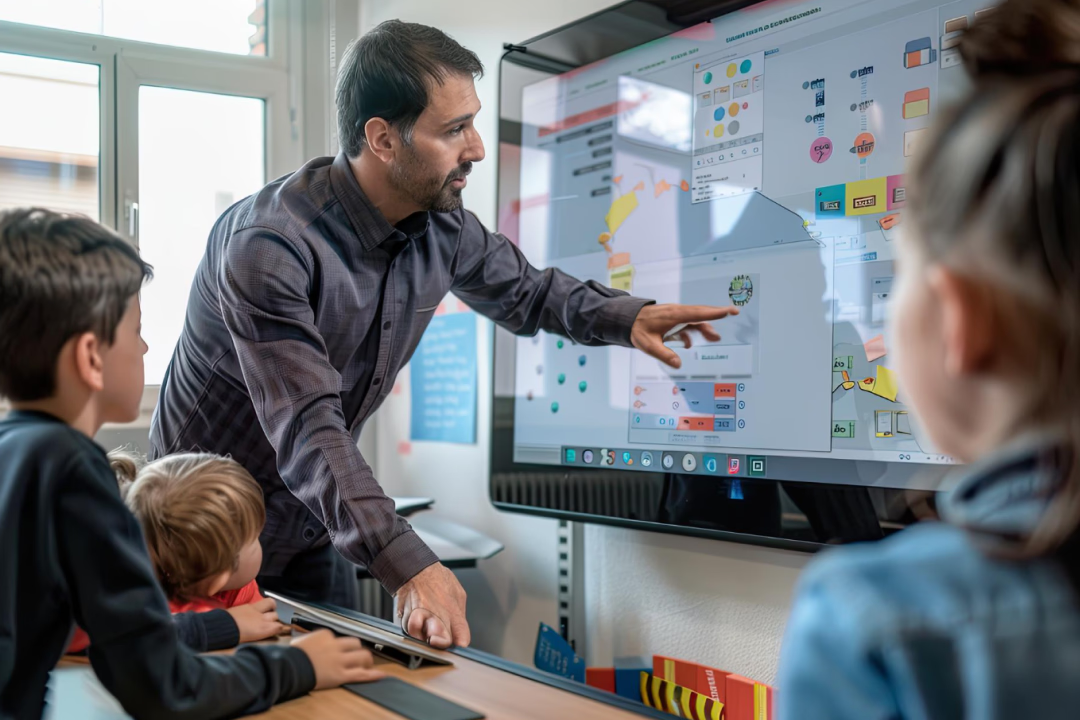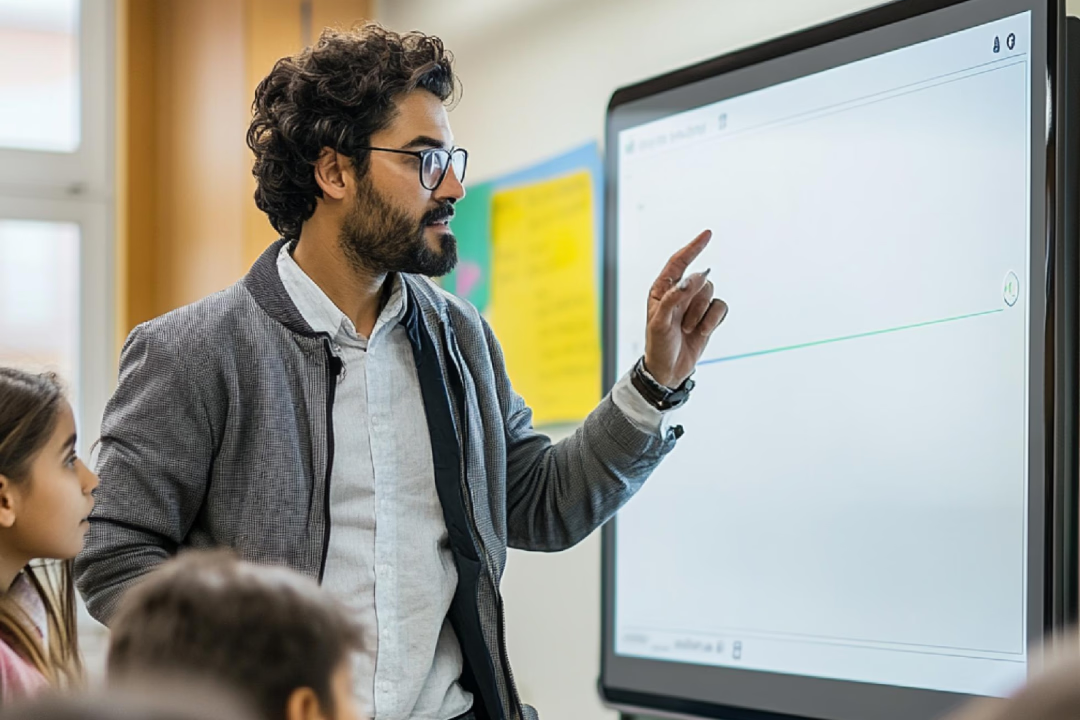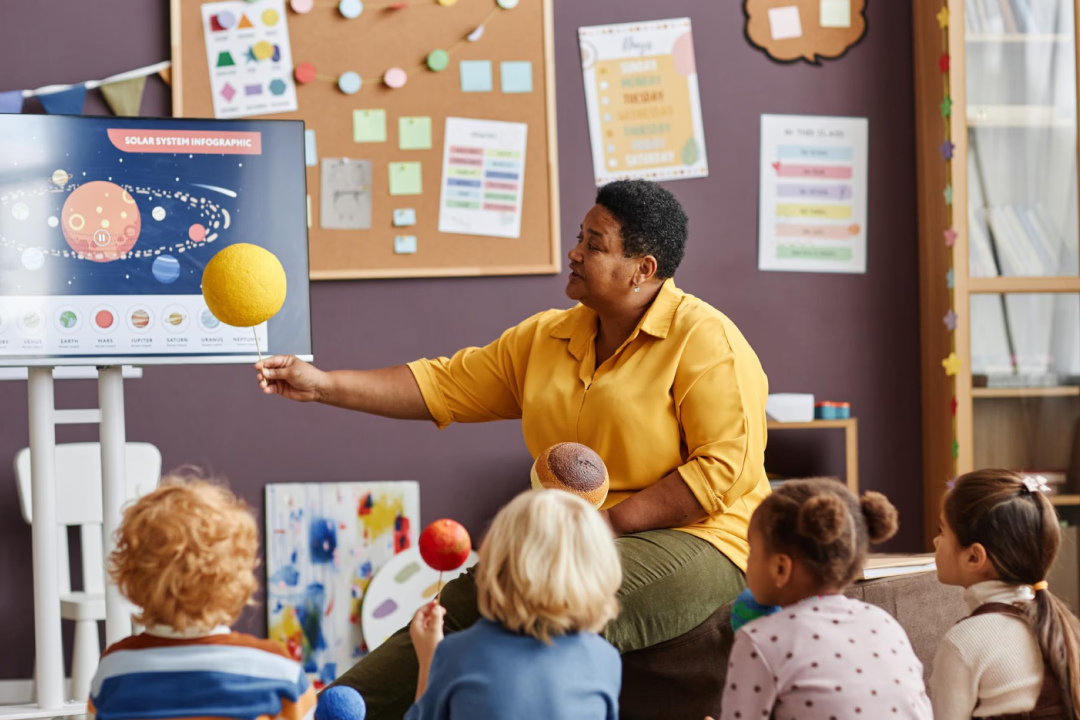What makes top teachers stand out in today’s tech-driven classrooms? It’s not just their experience—it’s their ability to pick the right teaching tools and techniques that amplify learning without overwhelming students or themselves. These teachers seem to create magic in their lessons, keeping students engaged and achieving high outcomes.
So, what exactly are they doing differently? The secret lies in how they choose and use teaching tools, not the fanciest or most expensive, but the most effective and classroom-ready. Are you curious to know what’s inside their digital toolkits? You’re about to find out.
Let’s begin by unpacking what truly defines a “smart” teaching tool—and why top teachers swear by them.
Not all tools for teaching are created equal. What separates a smart teaching tool from the rest isn’t just its tech features—it’s how well it blends into your lesson without causing friction. Teaching tools for teachers should simplify instruction, enhance student engagement, and support the achievement of meaningful learning outcomes.
A smart tool is intuitive, adaptable across subjects or age groups, and designed to spark interaction rather than passive consumption. Whether enabling real-time feedback, fostering collaboration, or streamlining assessments, it should make your job easier, not more complicated.
Creative teaching tools take it one step further by transforming ordinary lessons into exciting experiences. They allow students to explore, question, and create in ways traditional methods can’t.
In short, a smart teaching tool isn't about being high-tech, it's about being highly effective. And the best ones are often surprisingly simple.
Let’s explore the top teaching tools that teachers rely on in smart classrooms.
The right tools make all the difference when it comes to creating impactful smart classrooms. Top teachers use some of the most trusted and creative teaching tools to boost engagement, save time, and deepen learning.
1. Kahoot
Kahoot is a game-based learning platform that transforms quizzes and assessments into interactive, high-energy activities. Students join using their own devices, while questions appear on a shared screen, making review sessions engaging and competitive. As one of the most widely used creative teaching tools, Kahoot makes combining fun with focused learning in smart classrooms easy.
Why Top Teachers Use It
Top teachers love Kahoot because it encourages every student to participate, especially those who are usually quiet or hesitant. It offers instant feedback, helps identify learning gaps, and requires zero extra grading. More than just a quiz app, Kahoot has become a go-to resource for teachers seeking meaningful and engaging ways to assess understanding. Among the many teaching tools examples in modern classrooms, it stands out for its simplicity, impact, and student appeal.
How You Can Use It Too
Use Kahoot to run a quick quiz at the end of your lesson. You can create your own or select from thousands of ready-made quizzes aligned to different subjects and levels. It’s perfect for revising key concepts, introducing new topics, or simply energising the class after a long explanation.
How to Use It
- Go to kahoot.com and create a free teacher account
- Search for a topic or create a custom quiz
- Click “Play” and select Classic Mode
- Share the game PIN on your screen; students join using their devices
- Use post-quiz reports to reflect on student understanding and plan your next steps
2. Canva for Education
Canva for Education is a free graphic design platform designed specifically for schools. It enables both teachers and students to create visually engaging content, including posters, presentations, infographics, worksheets, and more. It brings creativity into the classroom with easy-to-use templates that require no prior design experience, making it one of the most adaptable tools for digital-age teaching.
Why Top Teachers Use It
Top teachers use Canva not only for classroom displays and worksheets, but also to encourage visual thinking and student expression. It supports differentiated learning, allowing students the freedom to express their ideas in a creative manner. As one of the most flexible teaching tools for teachers, Canva simplifies content creation while helping learners engage with material in new, meaningful ways.
How You Can Use It Too
Design a lesson recap poster with your students, create an infographic to explain a concept, or let learners build a digital portfolio of their work. Whether you're introducing a topic, assigning a project, or creating visual rubrics, Canva is a go-to among modern teaching tools and techniques for making learning more interactive and student-centered.
How to Use It
- Visit canva.com/education and sign up with your school email
- Create a free educator account and set up your class
- Choose from thousands of free templates or design from scratch
- Invite students to collaborate in real time or assign individual work
- Download, print, or share their creations digitally
3. Padlet
Padlet is a virtual bulletin board that enables students and teachers to post notes, links, images, videos, and reflections in a single collaborative space. Think of it as a digital wall where ideas come together in real time, making it ideal for brainstorming, exit tickets, group projects, and feedback activities. It’s simple to use and works on any device—no downloads needed.
Why Top Teachers Use It
Top teachers use Padlet to create interactive, student-led learning moments. It gives every student a voice, especially those who may not feel confident speaking out loud. With its visual layout and ease of use, Padlet is one of those creative teaching tools that adapts to any subject and any level, helping students express ideas in ways that go beyond traditional discussion formats.
How You Can Use It Too
Use Padlet at the end of a lesson to gather reflections or questions. Set it up during group activities to allow students to share their research or peer feedback. It’s also perfect for collaborative writing, brainstorming before projects, or even documenting field trips and class events. Padlet stands out for its flexibility and student-centered design among today's most engaging teaching tools examples.
How to Use It
- Go to padlet.com and create a free account
- Choose a board format (wall, grid, timeline, etc.)
- Add a prompt or question to get students started
- Share the Padlet link or QR code with your class
- View, respond to, and organize student posts in real time
Want more classroom-ready tips and tools like these?
Subscribe to our newsletter for weekly strategies, free resources, and expert insights to elevate your teaching straight to your inbox.
Subscribe Now
4. Edpuzzle
Edpuzzle is an interactive video platform that enables teachers to transform any video—YouTube, TED, or their own—into a comprehensive lesson by embedding questions, voice notes, and prompts. It transforms passive watching into active learning, making it a powerful tool for flipped classrooms, homework, or self-paced revision.
Why Top Teachers Use It
Top teachers use Edpuzzle to make video lessons more interactive and check if students are following along. It helps them pause videos to ask questions, keeping students active and thinking, not just watching. It allows them to pause at key moments, ask critical questions, and ensure that students aren’t just watching but thinking. As part of modern teaching tools and techniques, Edpuzzle offers a perfect blend of media and meaningful interaction, helping teachers bring video content to life.
How You Can Use It Too
Use Edpuzzle to assign a video lesson before class and track who watched it and how they responded. During class, use it to break down complex topics into manageable chunks. It’s also great for reviewing difficult concepts and providing targeted support based on student responses. When searching for tools that combine multimedia with active learning for teaching, Edpuzzle stands out.
How to Use It
- Visit edpuzzle.com and create a free teacher account
- Choose a video from their library or upload your own
- Add multiple-choice or open-ended questions at specific points
- Assign the video to your students via a link or class integration
- Review student responses and track progress in your dashboard
5. Nearpod
Nearpod is an interactive presentation and assessment platform that transforms your existing lessons into dynamic, student-centered experiences. You can add polls, quizzes, virtual reality experiences, collaborative boards, and videos directly into your slides, allowing students to engage with the content in real-time on their own devices.
Why Top Teachers Use It
Top teachers use Nearpod to make learning more active and inclusive. Whether teaching in-person or online, Nearpod helps guide every student through a lesson at the same pace while collecting live feedback and responses along the way. It’s one of the most versatile teaching tools for teachers, especially those seeking to enhance participation without significantly altering their teaching style.
How You Can Use It Too
Start by turning one of your existing slide decks into an interactive Nearpod lesson. Add a few open-ended questions, a quick poll, or a drawing activity. You can also use it for bell work, formative assessments, or even full flipped classroom sessions. Nearpod is one of those creative teaching tools that blends structure with flexibility, making lessons both practical and exciting.
How to Use It
- Go to nearpod.com and create a free teacher account
- Upload a PowerPoint or Google Slides deck, or start from a Nearpod template
- Add interactive elements like quizzes, videos, or collaborative boards
- Launch the lesson live in class or assign it as student-paced homework
- Track participation and performance using Nearpod’s built-in reports
Choosing the right teaching tools can feel overwhelming with the numerous options available, but it doesn’t have to be. The key is to pick tools that make your life easier and your students’ learning better, not more complicated.
Before trying a new tool, just ask yourself a few simple questions:
- Will this help my students stay engaged, think deeply, or collaborate more effectively?
- Does it fit naturally into the way I already teach?
- Is it easy for me and my students to use without a steep learning curve?
- Will it solve a problem I face in the classroom?
Start small. Select one tool that feels good and incorporate it into a lesson. Notice how it works, tweak it if needed, and grow your toolkit. The teaching tools examples shared above are a great place to find something that clicks for you and your students.
Conclusion
The right tools can completely change how you teach and how your students learn. Whether they boost engagement, simplify your workflow, or help learners connect with content more deeply, using the right teaching tools and techniques can make your classroom smarter, not harder.
But you don’t have to do everything at once. Start small: pick one tool, try it with your students, and gradually build your toolkit. Remember, it’s not about using the most tools but about using the right ones effectively.
To help you get started, we’ve created a FREE Downloadable Top Teaching Tools Sheet. Along with the tools mentioned in this blog, it also includes additional teacher-recommended tools to give you even more options for your classroom.
And if you're ready to go beyond just using tools and want to master how to apply them with strong pedagogy, check out the Professional Graduate Certificate in Teaching & Learning (PgCTL) by Suraasa. It’s designed to help you become globally competent teachers who teach with impact, whether in a physical, digital, or smart classroom.
FAQs
What are the tools used by teachers?

Teachers commonly use digital tools such as Kahoot, Canva, Nearpod, Padlet, and Edpuzzle to enhance engagement, simplify assessments, support collaboration, and bring creativity into daily lessons.
What is a teaching tool?

A teaching tool is any physical or digital resource that helps teachers deliver content effectively, engage learners, and support learning objectives through activities, visuals, technology, or structured formats.
What are planning tools in teaching?

Planning tools help teachers design and organize lessons. Examples include lesson plan templates, pacing guides, Trello boards, Google Calendar, and curriculum mapping platforms, all designed to streamline the teaching process.
Which is an excellent tool for learning?

An excellent tool for learning is one that boosts engagement and supports active participation. Tools like interactive quizzes, collaborative platforms, and video-based learning apps help simplify concepts and enhance understanding.
What is the best educational tool?

There’s no single best tool—it depends on your teaching goals. However, Canva, Kahoot, and Nearpod are top choices for creating engaging, student-centered, and interactive learning experiences.
Table of Contents

Sananda Roy
Sananda Roy is a content writer here at Suraasa with a passion for learning and writing. She crafts engaging content that inspires and informs, blending creativity with a deep love for education.

















